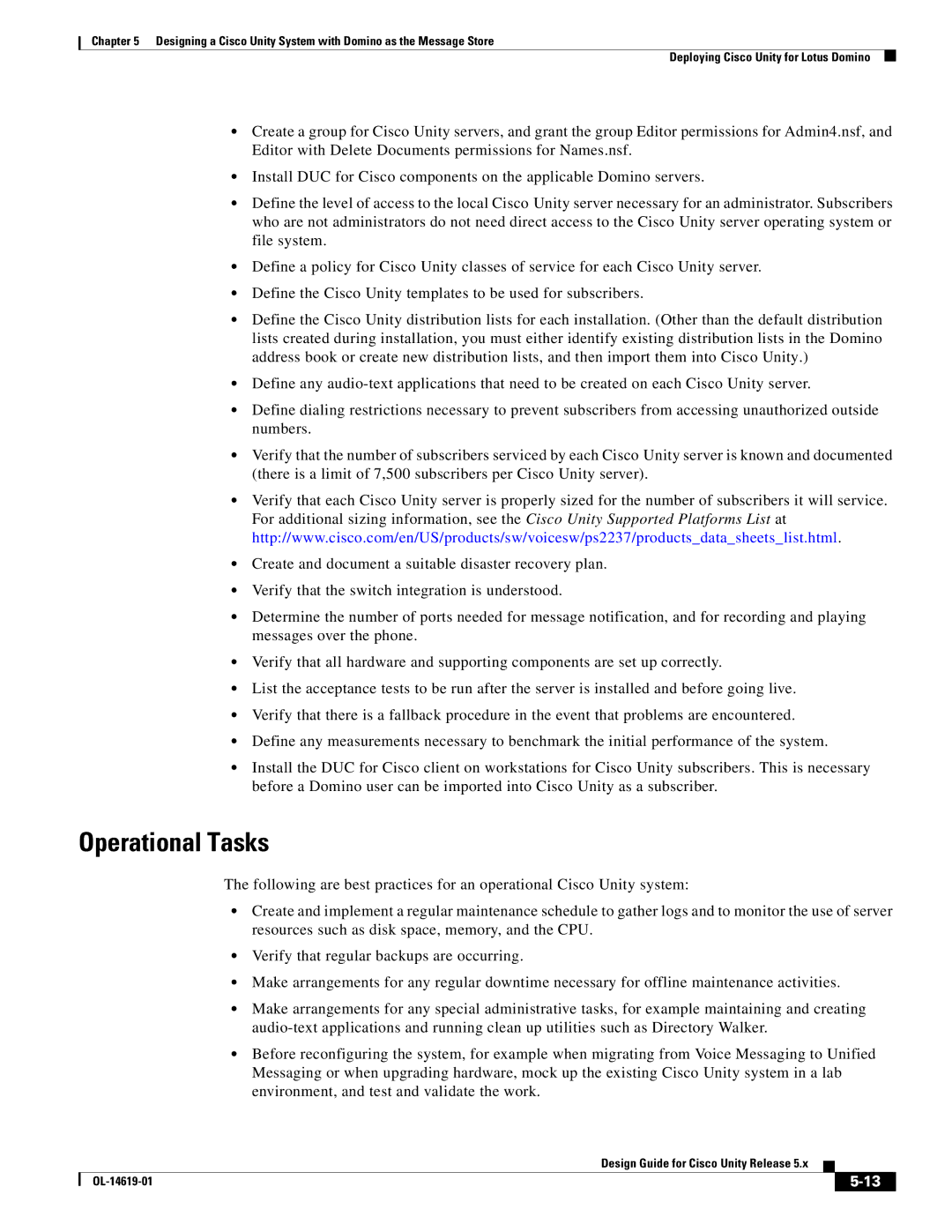Chapter 5 Designing a Cisco Unity System with Domino as the Message Store
Deploying Cisco Unity for Lotus Domino
•Create a group for Cisco Unity servers, and grant the group Editor permissions for Admin4.nsf, and Editor with Delete Documents permissions for Names.nsf.
•Install DUC for Cisco components on the applicable Domino servers.
•Define the level of access to the local Cisco Unity server necessary for an administrator. Subscribers who are not administrators do not need direct access to the Cisco Unity server operating system or file system.
•Define a policy for Cisco Unity classes of service for each Cisco Unity server.
•Define the Cisco Unity templates to be used for subscribers.
•Define the Cisco Unity distribution lists for each installation. (Other than the default distribution lists created during installation, you must either identify existing distribution lists in the Domino address book or create new distribution lists, and then import them into Cisco Unity.)
•Define any
•Define dialing restrictions necessary to prevent subscribers from accessing unauthorized outside numbers.
•Verify that the number of subscribers serviced by each Cisco Unity server is known and documented (there is a limit of 7,500 subscribers per Cisco Unity server).
•Verify that each Cisco Unity server is properly sized for the number of subscribers it will service. For additional sizing information, see the Cisco Unity Supported Platforms List at http://www.cisco.com/en/US/products/sw/voicesw/ps2237/products_data_sheets_list.html.
•Create and document a suitable disaster recovery plan.
•Verify that the switch integration is understood.
•Determine the number of ports needed for message notification, and for recording and playing messages over the phone.
•Verify that all hardware and supporting components are set up correctly.
•List the acceptance tests to be run after the server is installed and before going live.
•Verify that there is a fallback procedure in the event that problems are encountered.
•Define any measurements necessary to benchmark the initial performance of the system.
•Install the DUC for Cisco client on workstations for Cisco Unity subscribers. This is necessary before a Domino user can be imported into Cisco Unity as a subscriber.
Operational Tasks
The following are best practices for an operational Cisco Unity system:
•Create and implement a regular maintenance schedule to gather logs and to monitor the use of server resources such as disk space, memory, and the CPU.
•Verify that regular backups are occurring.
•Make arrangements for any regular downtime necessary for offline maintenance activities.
•Make arrangements for any special administrative tasks, for example maintaining and creating
•Before reconfiguring the system, for example when migrating from Voice Messaging to Unified Messaging or when upgrading hardware, mock up the existing Cisco Unity system in a lab environment, and test and validate the work.
|
| Design Guide for Cisco Unity Release 5.x |
|
| |
|
|
| |||
|
|
|
| ||
|
|
|
| ||
